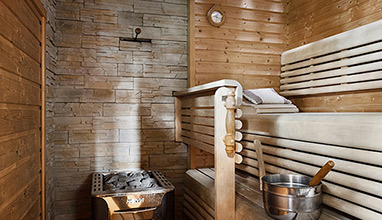Sustainable Masonry Practices: How Modern Contractors Build Greener Structures
In an era where environmental consciousness is no longer optional, the construction industry is undergoing a profound transformation. Among the many disciplines adapting to this shift, masonry stands out for its ability to merge age-old craftsmanship with cutting-edge sustainability. Modern masonry contractors Bronx are redefining how buildings are designed, constructed, and maintained by embracing practices that reduce environmental impact while preserving the strength and beauty that masonry is known for. From sourcing materials responsibly to optimizing energy performance, sustainable masonry is becoming a cornerstone of green building.

The Evolution of Masonry in a Sustainable World
Traditionally, masonry has been valued for its durability, fire resistance, and aesthetic appeal. Brick, stone, and concrete have long been the materials of choice for structures meant to last. However, the environmental cost of extracting, manufacturing, and transporting these materials has prompted a reevaluation of how masonry fits into the broader goals of sustainable development. Today’s contractors are not abandoning masonry—they are reinventing it. By integrating environmental research, architectural innovation, and advanced technologies, they are creating masonry solutions that are as responsible as they are resilient.
Eco-Friendly Materials and Responsible Sourcing
One of the most significant shifts in sustainable masonry is the move toward eco-friendly materials. Recycled content is increasingly used in bricks and concrete blocks, reducing the demand for virgin resources and minimizing waste. Fly ash, slag, and other industrial byproducts are being repurposed as supplementary cementitious materials, lowering the carbon footprint of concrete production. Natural stone, when locally sourced, offers a low-impact alternative that requires minimal processing and transportation.
Contractors are also paying close attention to the origin of their materials. Sustainable sourcing involves selecting suppliers who adhere to environmental standards and ethical labor practices. This not only ensures the integrity of the supply chain but also supports regional economies and reduces emissions associated with long-distance shipping. By choosing materials that are both durable and environmentally responsible, masonry contractors contribute to a more sustainable built environment.
Energy Efficiency Through Thermal Mass
Masonry’s inherent thermal mass is a powerful tool in energy-efficient design. Materials like brick and stone absorb heat during the day and release it slowly at night, helping to regulate indoor temperatures and reduce reliance on mechanical heating and cooling systems. This passive energy performance is especially valuable in climates with significant temperature fluctuations, where it can lead to substantial energy savings.
Modern contractors are enhancing this natural advantage by integrating masonry with insulation systems that maximize thermal performance. Techniques such as cavity wall construction, insulated concrete forms, and ventilated facades allow buildings to maintain comfort while minimizing energy consumption. These innovations demonstrate how traditional materials can be adapted to meet contemporary sustainability goals.
Waste Reduction and Construction Efficiency
Sustainable masonry also involves minimizing waste during construction. Contractors are adopting modular design principles that allow for precise material usage and easier assembly. Prefabricated masonry units and dry-stack systems reduce the need for mortar and cutting, leading to cleaner job sites and faster installation. Reusing and recycling demolition debris further reduces landfill impact and conserves resources.
Digital tools are playing a growing role in waste reduction. Building Information Modeling (BIM) enables contractors to plan projects with greater accuracy, identifying potential conflicts and optimizing material quantities before construction begins. This proactive approach not only improves efficiency but also supports sustainability by reducing excess and avoiding costly rework.
Water Conservation and Site Management
Water is another critical resource in sustainable masonry practices. Contractors are implementing methods to reduce water usage during mixing, curing, and cleaning. Low-water mortar mixes and dry construction techniques help conserve water without compromising quality. On-site water management strategies, such as rainwater harvesting and permeable paving, further enhance sustainability by reducing runoff and supporting groundwater recharge.
Proper site management also plays a role in protecting the environment. Erosion control measures, dust suppression, and responsible disposal of construction waste ensure that masonry projects do not negatively impact surrounding ecosystems. Contractors are increasingly trained in environmental stewardship, recognizing that sustainability extends beyond the materials to the entire construction process.
Lifecycle Thinking and Long-Term Value
Sustainable masonry is not just about building green—it’s about thinking long-term. Contractors are adopting lifecycle analysis to evaluate the environmental impact of materials and systems over time. This includes considering maintenance requirements, durability, and end-of-life options. Masonry’s longevity makes it an ideal candidate for sustainable construction, as buildings that last longer require fewer resources for repair and replacement.
Adaptive reuse is another strategy gaining traction. Instead of demolishing old masonry structures, contractors are finding ways to repurpose them for new uses. This preserves historical character, reduces waste, and avoids the environmental cost of new construction. By viewing buildings as evolving assets rather than disposable products, masonry contractors contribute to a more circular and sustainable economy.
Certifications and Industry Standards
Green building certifications such as LEED, BREEAM, and IGBC are driving the adoption of sustainable masonry practices. These programs set benchmarks for energy efficiency, material sourcing, and environmental impact, encouraging contractors to meet high standards of performance. Masonry plays a key role in achieving these certifications, thanks to its thermal properties, durability, and potential for recycled content.
Contractors are also guided by evolving building codes and industry standards that prioritize sustainability. As regulations become more stringent, the demand for skilled masonry professionals who understand green construction continues to grow. Training programs and professional development initiatives ensure that contractors stay current with best practices and emerging technologies.
Sustainable masonry practices represent a powerful fusion of tradition and innovation. By embracing eco-friendly materials, energy-efficient design, and responsible construction methods, modern contractors are building structures that honor the past while protecting the future. These practices not only reduce environmental impact but also deliver long-term value, resilience, and beauty. As the world moves toward greener living, masonry stands ready to lead the way—one brick, stone, and block at a time. For expert help navigating DOT and DOB sidewalk issues in New York City, trust the professionals at Nycsidewalkviolations.com to get the job done right.
Hits: 35 | Leave a comment
Tags:sustainability

















